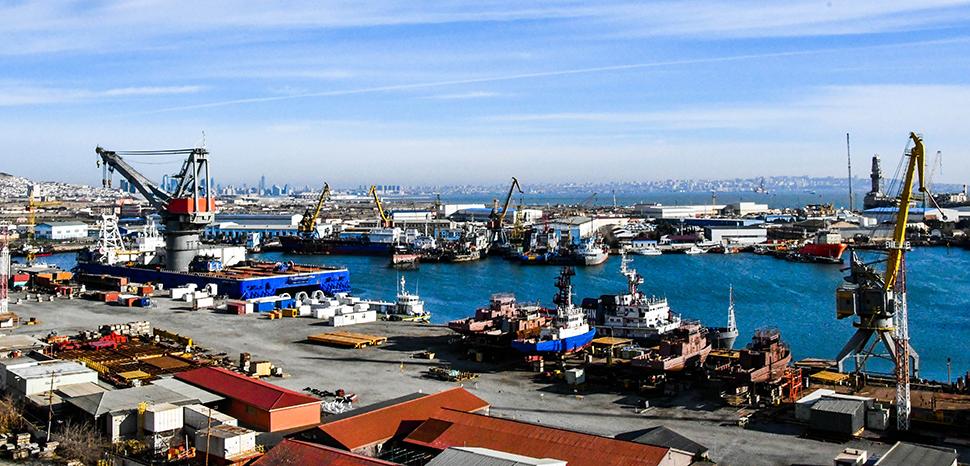Enhancing Georgias Transit Role: Addressing Infrastructure and Regulatory Challenges in the Middle Corridor




Breaking Down the Middle Corridor Efficiency
The Middle Corridor, known as the Trans-Caspian International Transport Route, stands as a vital artery in the global trade network, linking China to Europe. It offers an exhilarating alternative to traditional maritime shipping routes, especially in light of geopolitical changes, significantly cutting transit times and costs while boosting regional stability and cooperation. This land-based multimodal transport corridor spans from China, passing through Central Asia, across the Caspian Sea, traversing the Caucasus, and reaching Europe.
This land-based multimodal transport corridor, though laden with challenges, offers a promising alternative to the northern routes impacted by international tensions. Its potential to become a major player in global logistics cannot be understated, though it faces infrastructural and regulatory hurdles that need addressing. The corridor provides a faster, cost-effective route compared to the now less attractive Northern Corridor, bypassing the geopolitical entanglements of Russia and Ukraine. By significantly cutting transit times — in some cases, by ten days — it enhances supply chain reliability, especially for perishable goods and high-value items.
Georgia emerges as a crucial transit hub in this corridor. Its geographic positioning makes it a strategic gateway between Europe and Asia. The country's role is pivotal in overcoming infrastructural bottlenecks and improving logistical capabilities, thereby enhancing its position in the global supply chain. Georgia's strategic location as a transit hub underscores the urgency for infrastructural upgrades, including completing rail projects such as the Baku-Tbilisi-Kars railway, developing logistical centers, and enhancing port operations to address congestion and attract larger vessels.
Stakeholders identified key areas for improvement such as completing rail projects and building deep-sea ports to handle larger shipping volumes, thus boosting Georgia's international trade appeal. Efforts to streamline border processes and enhance infrastructure are essential for making the most of the Middle Corridor's geographic advantages. Quantitative assessments reveal that customs services and border clearance procedures remain a prominent bottleneck across regions, necessitating improvements in transparency and efficiency. Similarly, infrastructure improvements are essential, with stakeholders pointing out the need for modern rail and road networks, which are critical for cutting down transit times and operational costs.
Technology plays a crucial role in the corridor's development. Implementing IT solutions like blockchain and IoT can significantly improve operational efficiency by ensuring secure, transparent cargo tracking and real-time monitoring. Such integrations, although challenging, promise a substantial leap in logistical capabilities. Technological advances are central to enhancing the efficiency of this corridor, with IT innovations such as blockchain providing transparent cargo tracking, the Internet of Things (IoT) enabling real-time monitoring of goods, and Artificial Intelligence (AI) offering predictive analytics. Each of these technologies has the potential to vastly improve operational efficiency, but they also present challenges, including significant initial investments, the need for personnel training, and ensuring interoperability between different systems used by countries along the route.
The corridor's multilateral nature poses unique challenges. Harmonizing customs procedures and regulatory frameworks across countries such as Azerbaijan, Kazakhstan, and Georgia is essential. Moreover, fostering governmental collaboration through frameworks similar to the European Union's models could lead to seamless operations. While the Middle Corridor holds immense potential, it confronts significant challenges stemming from its multilateral nature and infrastructural bottlenecks. Key challenges include discrepancies in customs services and border clearance procedures, regulatory inconsistency, and complexities in governmental processes across different nations. Additionally, IT regulations and the harmonization of documentation remain areas needing substantial improvement.
Effective trade routes need seamless regulatory alignment across participating nations. The Middle Corridor, touching countries such as Georgia, Kazakhstan, and Azerbaijan, reveals notable complexities in coordination. Significantly, stakeholders highlighted challenges like the inconsistent regulatory environments, with frequent updates impinging on the costs and efficiency of trade operations. One of the standout findings from the research is the necessity for intergovernmental acceptance and harmonization of transport documentation. Streamlining these documents and ensuring mutual recognition among countries involved can vastly reduce delays and costs. This becomes even more pertinent with the push towards digital applications, where digital documentation offers a promising avenue to simplify transactions and enhance tracking and transparency.
The Middle Corridor's strategic value doesn't just lie in trade efficiency. It also fosters regional cooperation among transit countries like Georgia, Azerbaijan, and Kazakhstan, driving economic resilience and political stability. In an age where diversification of trade routes is crucial, this corridor plays a vital role in China's Belt and Road Initiative, offering a respite from over-dependence on single routes. The route promises to enhance economic resilience and integration by providing a shorter link between production centers and markets. Investment in infrastructure, regulatory harmonization, and adoption of cutting-edge technologies are key to unlocking the corridor's potential.
Solving the corridor's challenges requires a concerted effort. Stakeholder interviews reveal actionable strategies, such as adopting technological solutions like blockchain and IoT for improved logistics transparency and reliability. Furthermore, enhanced intergovernmental cooperation, inspired by models like the EU's TEN-T, can drive the harmonization needed for seamless operations. Integrating comprehensive regulatory frameworks and promoting the harmonization of trade policies across the corridor is paramount. Regular stakeholder engagement and synchronized regulatory changes would not only streamline transit operations but also fortify regional cooperation. Innovative methods like implementing a shunting system similar to CargoBeamer technology can significantly enhance operational productivity by reducing idle times at terminals.
While the Middle Corridor holds tremendous potential for boosting regional trade and economic growth, addressing these challenges through strategic investment and collaboration is essential to unlocking its full capacity. This pathway not only promises economic rewards but also marks a stride toward a more secure, integrated Eurasian trade landscape. The findings in this study are crucial for policymakers and stakeholders aiming to bolster the Middle Corridor's role in global trade.
Comments